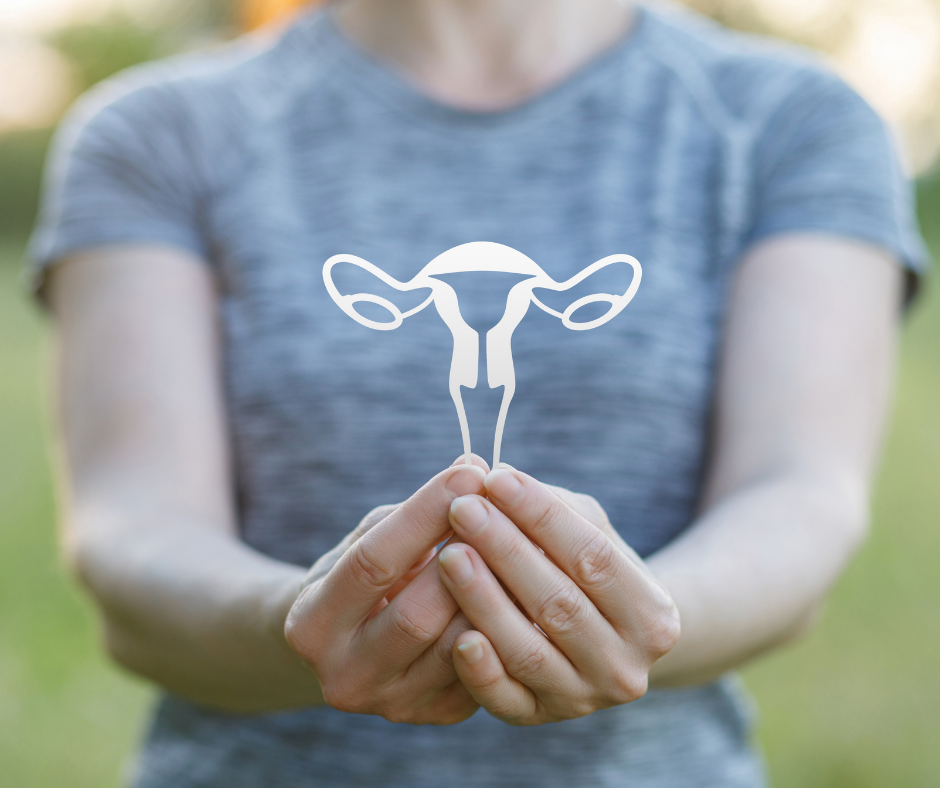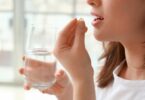Do you have a friend who complains about unusually strong menstrual periods? Does you period last really long, like a week or even more? Does your sister struggle to conceive naturally? Did you know that all of this are common symptoms that may hint at uterine fibroids?
Uterine fibroids
Uterine fibroids (also called leiomyomas or myomas) are benign growths of the uterus that affect a huge number of women of reproductive age. By the time a woman is 50, the estimated incidence is more than 70% (Anjnye and Laitner, 2021). Good news are that these growths are benign, as mentioned above. This means that they almost never develop into cancer. In fact, very often women don’t even realize they have them, as in most cases, they do not cause any symptoms at all. Then, fribroids may just be a incidental find during a pelvic exam or prenatal ultrasound.
Fibroid development
Uterine fibroids develop from a single stem cell in the smooth muscular tissue of the uterus (myometrium). When such a cell starts to divide repeatedly, it can eventually create the firm, rubbery mass distinct from nearby tissue, the fibroid. How the uterine fibroid develops further, can vary: it may grow slowly or rapidly, or remain the same size. Some fibroids go through growth spurts, and some may shrink on their own.
While the reasons for development of uterine fibroids and their growth are not fully understood, research has examined the impact of various factors. Some of these you cannot change, such as genetic factors. Some however, are really important and interesting to know about, because they can help you to better understand your condition and allow you to apply self-managment strategies to naturally reduce fibroid growth.
How to to reduce fibroid growth naturally
The good news are that research has identified a number of changeable factors that seem to have an influence of fribroid growth. Among these are hormonal balance, inflammatory processes, oxidative stress, obesity, vitamin D deficiency, and your diet.
Hormonal balance and fibroid growth
Research has found that fibroids seem to grow more rapidly when there is a lot of the sex hormone estrogen. Estrogen tends to trigger cell proliferation, particularly in all tissues that feature estrogen-receptors. So if there is more-than-usual estrogen, the healthy hormonal balance is disturbed and cells can multiply much faster than usual.
Since our adipose tissue is a hormone-producing tissue, it is important for fibroid patients to pay attention to healthy body weight, in order to maintain hormonal balance.
There are a number of food components that have been found to affect our hormone levels. Phytoestrogens, plant substances similar to our own sex-hormones, are abundant for example in soy. In line with this, the Study of Environment, Lifestyle, and Fibroids (SELF) revealed soy intake to be correlated with myoma volume. Other studies showed that particularly early-in-life consumption of soy was associated with an increased risk for myomas later in life. While not every study has found the same effect, limiting soy intake may be something to consider…
In addition to that it is well known that pollutants in food can promote hormone-related diseases. Many contaminants harm women’s health by acting as endocrine-disrupting chemicals through their resemblance with endogenous steroid hormones, including estrogen. Especially pollutants from fish, fruit, and vegetables are associated with increased risk for myomas. To gently slow down fibroid growth, it is therefore recommended to prefer organically grown fruit and vegetables. When choosing fish, go for fish that is not at the end of the food chain, as the big predatory fish tend to have a higher accumulation of pollutants such as cadmium and lead.
Carbohydrates and uterine myoma
According to the results of the Black Women’s Health Study (BWHS), foods high in easily absorbed carbohydrates such as sweets, lemonades, white bread or pasta, may be associated with an increased uterine myoma risk. All of these foods lead to spikes in blood sugar levels, triggering not only release of our blood sugar hormone insulin, but also that of insulin-like growth factor I (IGF-I). The latter has been shown to promote growth of myomas. When you want to slow down fibroid growth, one important aspect therefore is to avoid sugary drinks that will lead to very fast and high spikes in blood sugar and generally prefer whole-grain products.
Dietary fat and uterine myoma
While myoma risk does not seem to be influenced by total dietary fat uptake, the kind of fat you consume matters. The big American Nurses’ Health Study II showed that a diet high in trans-fats was associated with presence of uterine fibroids, whereas a diet high in omega -3 fatty acids lowered the risk of myomas. The underlying mechanism seems to be that both fats have been shown to impact inflammatory processes and high levels of systemic chronic inflammation trigger fibroid growth. Dietary trans-fats are known to stimulate inflammation and are thus associated with elevated fibroid risk, while omega-3’s are well characterized to gently and naturally lower inflammation and consequently a diet high in omega-3 is linked to lower fibroid risk. Researchers have therefore suggested omega-3s as a preventive and/or therapeutic option for uterine myoma (Islam et al, 2018)
Fruit and vegetables
Women who have four fruit or vegetable servings per day have a lower risk for developing uterine myomas, in comparison with women who have just one fruit or vegetable serving per day. Fruit and vegetables brim with healthy vitamins, minerals and antioxidants. Extracts of some kinds of vegetables and fruit containing are able to reduce uterine myoma proliferation in lab experiments. One reason for this is very likely that uterine fibroids have been associated with increased levels of oxidative stress and in turn, this oxidative stress seems to exacerbate disease progression. A diet high in fruit and vegetables, full of antioxidants and from regional, seasonal and organic production is thus an important aspect of fibroid self-management.
Dairy products and uterine fibroids
There is a lot of discussion as to the possible impact of milk and dairy products on the risk of myoma onset and growth. Research results are controversial, ranging from no effect to increase or – quite on the contrary – decreased risk for myomas. In fact milk components, such as calcium and butyric acid, seem to have antiproliferative effects on myoma cells. On the other hand, full-fat milk also contains high levels of hormones as the cows that produce the milk, are usually pregnant and a big proportion of their hormones is present in milk (particularly in the lipid portion).
My tip is be to use low-fat variants of milk and dairy products in order to reduce the hormonal burden and still be able to benefit from the beneficial ingredients.
Vitamin D
Far too little is know as to a possible impact of vitamins on myoma risk and prevalence. One of the best examined vitamins, however, is vitamin D.
Vitamin D is often referred to as our „sun“-vitamin, as it is predominantly produced in our body when we are in the sun.
Both an Italian study and similarly an Indian study showed that women affected by myoma had significantly lower vitamin D levels or even deficiency in comparison to healthy women. Comparable results were obtained from further studies conducted in Indian, Turkish, and Chinese women, confirming a correlation of vitamin D serum levels with uterine myoma risk. An Italian clinical trial, in addition to confirming the correlation between the largest myoma for each patient and vitamin D serum levels, proved that vitamin D hypovitaminosis correction through supplementation in women with myomas reduced the need for surgical or medical treatment .
Fibroid patients are therefore advised to have their vitamin D levels checked regularly (particularly by the end of winter) and supplement vitamin D as needed. Many will find it best to supplement small amounts of vitamin D all through the darker seasons, when the body’s own production of vitamin D is low due to lack of sunshine.
Minerals
Women with fibroids presented lower serum levels of zinc in a Chinese study, and lower levels of serum selenium in a Bulgarian study in comparison to healthy control groups.
In the Japanese quail, commonly used as animal model of uterine myoma, supplementation with selenium and zinc reduced the incidences of spontaneously occurring myomas of the oviduct, thus suggesting a possible human benefit from selenium and zinc supplementation (Sahin et al, 2009).
Zinc is one of the essential trace elements, cannot be synthesized by the human body itself and cannot be ingested with food. The body does not have a classic store for zinc, such as bones and teeth for the mineral calcium. This means: We have to supply zinc regularly with food. However, absorption from food is made much more difficult with a phytate-rich diet, so that it is not uncommon even if you eat very healthily not to get enough. Selenium supply is also not always optimal, because the soils in Central Europe are quite low in selenium and so are all foods that are produced on these soils.
Conclusion
Patients with uterine fibroids can do a lot themselves to ensure that fibroids do not grow too quickly. In particular, an adequate diet with plenty of organically grown fruit and vegetables and whole grain products in combination with healthy fats and, if necessary, supplemented with antioxidants, omega-3 fatty acids, vitamin D, zinc and selenium, can help to keep fibroids small and unproblematic. The best thing about it: Such a diet is generally healthy, easy to implement and naturally free of side effects 😊
Product tip: Fertilovit F Endo has been specially developed by fertility specialists to meet the needs of women with endometriosis who wish to have children. Due to the systemic mode of action and the special composition, it is also ideal for women with fibroids who want natural care that is tailored to their needs.
References:
Irene O Aninye, Melissa H Laitner Uterine Fibroids: Assessing Unmet Needs from Bench to Bedside Journal of Women’s Health 2021, 30 (8): 1060-1067
Islam MS, Castellucci C, Fiorini R, Greco S, Gagliardi R, Zannotti A, Giannubilo SR, Ciavattini A, Frega NG, Pacetti D, Ciarmela P. Omega-3 fatty acids modulate the lipid profile, membrane architecture, and gene expression of leiomyoma cells. J Cell Physiol. 2018 Sep;233(9):7143-7156. doi: 10.1002/jcp.26537. Epub 2018 Mar 25. PMID: 29574773.
Markowska A, Mardas M, Gajdzik E, Zagrodzki P, Markowska J. Oxidative stress markers in uterine fibroids tissue in pre- and postmenopausal women. Clin Exp Obstet Gynecol. 2015;42(6):725-9. PMID: 26753472.
Sahin N, Tuzcu M, Ozercan I, Sahin K, Prasad AS, Kucuk O. Zinc picolinate in the prevention of leiomyoma in Japanese quail. J Med Food. 2009 Dec;12(6):1368-74. doi: 10.1089/jmf.2008.0287. PMID: 20041795.
Tinelli A, Vinciguerra M, Malvasi A, Andjić M, Babović I, Sparić R. Uterine Fibroids and Diet. Int J Environ Res Public Health. 2021 Jan 25;18(3):1066. doi: 10.3390/ijerph18031066. PMID: 33504114; PMCID: PMC7908561.







